foot in mouth: July 2010 Archives
But first: to all of you who came out on a blearily hot summer morning for my talk for the Dance Critics Association conference (see previous post ): thank you. It was lovely to meet those of you I've only corresponded with or haven't even done that, to see those of you I know, and to receive such a warm and interested response.
Some of you who couldn't make it have wanted to know how you can hear the talk. I think there will be a video--though probably not for some weeks. If and when there is, I will post it here. If there isn't, I'll see about an mp3.
In the meantime, here are chunks of four reviews from the last two weeks, finally updated with photos and some commentary.
My essay/summary of the four farewells at New York City Ballet--of Darci Kistler, Albert Evans, Philip Neal, and Yvonne Borree. Special prize to anyone who correctly identifies the "fellow believer" mentioned in my lede. One of the pleasures of June was getting to check in regularly with ballet friends.
"It's like church," a fellow believer observed of the Sundays in June we were spending bidding farewell to principal dancers at New York City Ballet - one per week. And, indeed, there is a reassuring ritual sameness to these leave-takings. (Not so during Balanchine's lifetime, when your fate fell to one extreme or another: either to fade away or to be sent off in royal fashion, with a new ballet as your goodbye present.)The programme begins like any other, except that the guest of honour has chosen the ballets. But after the final curtain calls, the dancer ends up alone on the vast stage. Soon, past and present partners file in to fill her arms with flowers and her lips with kisses, and to cry. Next, the younger generation shows up, smiling sheepishly as they each offer a single rose. Finally, ballet master-in-chief Peter Martins arrives to bless the dancer's afterlife.
When the curtain descends and rises once more, the dancer is alone with us again. It is almost impossible not to ache. Besides the intimations of mortality, everything about how this person leaves reminds you of how he or she has danced.
Yvonne Borree - age 40, with the company for 22 years - was one of those principals who preferred to share the spotlight. She regularly elicited the most ardent attention from her partners - and did so again on June 6. During the ovations, the recently retired Damian Woetzel handed her his heart, or at least the Steadfast Tin Soldier's paper cut-out. The ballets were romantic, too. For Balanchine's Duo Concertant, Borree and the gallant Jared Angle were perfectly attuned to each other, whether alternating solos or standing side by side and hand in hand listening to the violinist and pianist. At the ballet's end, a spotlight homed in on Borree's hand. Angle clasped it in both his own. When he released it, it fluttered up like a dove in the dark.
Jared Angle giving Yvonne Borree his all for her final Duo Concertant. Photo by Paul Kolnik for the NYCB.
Philip Neal, 42, who has danced with the company since 1987, is a soft, bright Apollo - still. Of the four, he departs with his technique most intact. On June 13, he went out with Balanchine's Chaconne, one of the most devilish roles in the repertory, delivering the wide, sharp steps cleanly and at top speed. But he doesn't call attention to himself; a classicist, he effaces himself for the dance's sake. As his ballerina, regular partner Wendy Whelan danced entirely for him. In a jiggy solo, she caught his eye at every phrase's end. He smiled a little; if he had smiled more, I think he might have burst into tears.
A final reverence to the genius on the wing from these longtime partners. Photo by Paul Kolnik for NYCB.
After the bouquets and the parade of ballerinas and his life partner kneeling at his feet, Neal spread his arms and bowed his head in gratitude.
Albert Evans among the flowers. Photo by Paul Kolnik.
For the whole piece, click here. Because I am late in posting this, you will have to register to read, but registration is free and you only have to do it once.
Review of three newish casts in Kenneth MacMillan's Romeo and Juliet at American Ballet Theatre--David Hallberg and Gillian Murphy; Herman Cornejo and Xiomara Reyes; and Cory Stearns and Hee Seo:
In the past half century, it has become a rite of passage for a choreographer to mount his own Romeo and Juliet. There are now many. But none can claim the popularity of Sir Kenneth MacMillan's 1965 creation for the Royal Ballet, immortalised on film by Margot Fonteyn and Rudolf Nureyev. The Royal Ballet has performed it some 400 times; meanwhile at American Ballet Theatre, Romeos and Juliets have loved and died nearly every year since MacMillan set the ballet on the company in 1985. After watching three ABT performances over two days, I can vouchsafe that while your heart may break, the ballet only grows stronger with multiple viewings.Driven by Prokofiev's emotionally dense and variable score, the action shifts seamlessly from the bustle of a Renaissance town square to the chilly ranks of guests at the Capulet ball to the warm cocoon of Juliet's bedroom. The steps delineate complex emotions, even for the chorus - Juliet's band of blushing girlfriends, for example, or the flea-ridden whores. And for the illustrious lovers, the choreography is elastic enough to sustain multiple interpretations without loss of poetry. Plus, the ballet is sexy. The balcony scene - a sustained pas de deux of coital lifts and plunges to Prokofiev's overlapping crescendos - is the gold standard for contemporary ballet romance.
On Tuesday night, lean, brooding David Hallberg and his forthright lady, Gillian Murphy, caught the music's wave and rode it in. But the way the two looked at each other mattered more....
Oh, the incline of those necks! Photo by Rosalie O'Connor for ABT.
For the whole review, click here.
Review of Johannes Wieland's very intriguing and promising roadkill at Dance Theater Workshop a couple of weeks ago:
Johannes Wieland's ingenious roadkill transpires on stage, on screen and, most suggestively, in between. The dance-cum-video by the Kassel State Theater's recently appointed resident choreographer consists of a double duet. Harassing the live dancers Eva Mohn and Ryan Mason are their hip screen doubles high on the theatre's back wall. "Eva, relax," orders her outsized celluloid self via English subtitles. In knee-high boots and lilac miniskirt, this casual screen goddess belongs in some European art film from the 1970s - Wim Wenders' The American Friend, say. An identically dressed Mohn , squatting on the floor, stuffs her head into her leather satchel. "Hey, Eva," her double continues, "have some fun." The dancer hurries across a tiny patch of ground with steps so small they would do a centipede proud.
Mohn and Mason squared. Photo by Nils Klinger.
Meshing video, dance, avant-rock composer Ben Frost's chameleonic score and a set that conjures an abandoned aircraft runway, with its borders of trash and rotting leaves, roadkill depicts a state of self-alienation that tips easily into numb ennui or useless frenzy. It captures this limbo with admirable economy, but then founders. Halfway into the hour-long work, I am tired of these people, with their fake dilemmas - their "Should we have fun or make a plan?"
Wieland might have taken a lesson from those wanderlust films he invokes....
I especially admired Wieland's smart use of video: not the usual temporal geography whereby the screen signifies what has already happened and the live dancers what is happening. These screen figures already know what is going to happen to their puny, anxious live versions. They are ahead of them, like celluloid greek gods: untouchable, bemused, long past ready for their closeups.
For the whole review, click here.
Finally, last week, glorious weirdo Saburo Teshigawara, installation artist cum choreographer and dancer:
I defy anyone to describe Saburo Teshigawara's Miroku without sounding like an exhumed hippie. The 56-year-old cultishly adored Japanese choreographer's dance plus light installation is an oxymoron: a performance of living. The title refers to a prediction of the Buddha before entering nirvana, about the perfection of an earthbound life, but it will also resonate with contemporary fans of anime and manga, where a Buddhist priest action hero goes by the name. If the loud, shape-shifting solo works for you - and it did for me, though it took some initial adjusting - you leave the theatre feeling as if you have just emerged from a bout with the elements.For an hour within three colour-shifting walls, Teshigawara's dancing slips from the palsied to the buttery, with patches of alert stillness, in which he assumes a sculptural pose. With his big, knobbly, bald head, thin neck and beautiful, concentrated face, this handsome ET moves his arms as bonelessly as tendrils, or as sharply as flames of glass. His rubbery legs can seem to be....
This photo, by Stephanie Berger for the Lincoln Center Festival, conveys better than I did the Rothkoesque quality of the walls' moving painting. It had that spiritual, fuzzy-edged glow.
For the whole shabang, click here.
ME!
I hope you can make it.
The talk will be at the Kimmel Center at NYU this very Friday July 16 at 9:30 AM for about an hour.
The Kimmel is at 60 Washington Square South, near the 4th Street stop for the A, C, E, B, D, F, M; the 8th Street stop for the N, R, and W; the Astor Place stop for the 6; and not far from the Union Square stop for N, R, Q, W, 4, 5, 6.
The topic is big: how to write criticism that leaves room for dance's future. My answers are provisional, hopeful and possibly cause for debate and fuming.
The DCA has joined forces and resources this year with the World Dance Alliance, so I will be thinking of "dance" as largely as I know how. But there will be some time afterward for you to offer your own thoughts.
So, how to attend?
The DCA board has very kindly allowed Foot in Mouth readers to pay the markedly reduced price of $8 for the talk. Just click here and pay in advance. The receipt functions as your ticket. This means you cannot just show up and pay. Have to do it in advance. (The linked html, for the luddites among us, is http://www.dancecritics.org/conferencepayment-scherr.html)
Later, you can apply the $8 towards the price of the whole conference or toward a pass to the sessions on a given day--and pay on the premises. The conference runs from Friday July 16 until Sunday July 18. You may also pay $15 for additional individual sessions on any day.
There are several conferences I think will be fantastic. Namely:
On FRIDAY (July 16) @ Kimmel
11-12:30 noon - Classical Indian Dance: Vocabulary and Critical Questions. This panel and demonstration is designed to give dance critics a deeper vocabulary for and understanding of classical Indian dance with particular reference to Bharatanatyam, the paradigm of classical Indian dance. Participants include Sunil Kothari, Rajika Puri, Malini Srinivasan, Preeti Vasudevan, Robert Abrams and Maya Chadda. The session includes a demonstration of elements common to classical Indian dance styles as well as a discussion of what it means to critique Indian dance, including issues such as whether a critique of Indian dance written from a pure dance perspective is a sign of respect; whether a knowledge of the aesthetic intent of Indian dance improves critiques of dance, Indian or otherwise; and the state of dance criticism in India.
3:15-4:45 p.m. - A Panel on Dance, Politics and Activism. Participants: Janet Eilber, artistic director of the Martha Graham Dance Company; choreographer Jane Comfort; scenic designer Bjorn G. Amelan representing the Bill T. Jones/Arnie Zane Dance Company; and Myna Mukherjee, producer of the Engendered Festival. The panel has been organized by Robert Johnson of the New Jersey Star-Ledger.
SATURDAY (July 17) @ Dance Theater Workshop (on 19th Street between Seventh and Eighth Avenues)
1-2:25 p.m. Cultural Exchange in 2010
Participants: Eiko (Eiko & Koma), writer Valerie Gladstone, presenter Baraka Sele, writer Eva Yaa Asantewaa, Urban Bush Woman chief Jawole Zollar, and writer Lori Ortiz (moderator). Today's artist is increasingly cosmopolitan. People from all cultures and subcultures tell their own stories now. It was not long ago that art of "other" cultures served as subject matter. Now, instead, we have little use for the word 'other' and we aspire to genuine dialogue. Cultural exchange has become a survival tactic for critics too.
SUNDAY (July 18) @ DTW12:15-1:45 p.m. - Dance, Technology, and the Law: brown bag lunch session (BYO)
The panel will address issues involving the intersection of law, technology, and dance. The discussion will focus primarily on copyright issues in the world of dance. The discussion will largely center around the Dance Heritage Coalition's Fair Use Statement -- how it was compiled, its content, and how it is put into practice. Obstacles to the dance field's legacy materials being available for research, teaching, and public programs will also be discussed.
For complete information on the DCA conference this weekend, click here.
To register for all or part of the conference, click here.
And, again, to get a ticket to my talk (which you can later apply to more complete registration), click here.
Hope to see you there.
As if to underscore the Americanness of the form, the weeks around Independence Day always see a conflagration of hoofers and hoofing in Manhattan. This year, the events are particularly rich in history and scope. Besides Savion Glover at the Joyce through next week (reviewed at the bottom of this post) and the annual live Tap City events at Symphony Space and the New York Public Library of the Performing Arts, my friend and colleague, tap historian and critic Brian Seibert's World of Tap Dance is a must-see and hear. It transpires during the daytime hours and into the evenings. Here's the notice and schedule: (I duplicate the website announcement in full, but click here for directions): The Segal Center is pleased to devote two days to Tap Dance, a complex American popular art with a rich and under-recognized history and a present that's vibrant and international. Presented in partnership with the American Tap Dance Foundation, The World of Tap Dance will feature discussions with renowned tap artists across the generations, special screenings of classic and rare dance footage, and live performances by a curated lineup of dynamic tap artists. Day 1 will look back on the history of tap, with a special focus on the late and legendary Chuck Green, while Day 2 will survey the recent bloom in tap activity around the world, from Europe to Brazil to Japan.
A Two-Day Celebration
All Day Tuesday + Wednesday, July 6 - 7, 2010
Screenings begin at 10:00 a.m.
Panels /performances at 6:30 p.m.
Martin E. Segal Theatre Center in Elebash Hall. Free!
Tuesday, July 6
A look back on the history of tap, with a special focus on the late and legendary Chuck Green
SCREENINGS, curated from his personal collection and with live context and commentary by Brian Seibert, dance writer for The New Yorker and The Village Voice and author of a forthcoming history of tap dancing. Schedule subject to change.
10-11 a.m: Early TapSome of the earliest film segments of tap dancing, from the silent era (when technology missed half of the art) into the early sound era, when the filming of tap dancing exploded.
11a.m.-12 p.m: The Thirties Tap dance is at the center of popular culture. Hollywood knows this and fills its movies with tap numbers. Classic routines by such legends as Bill Robinson, Fred Astaire, Eleanor Powell, Ruby Keeler, Ray Bolger, and The Nicholas Brothers join classic routines by lesser-known tap masters Hal LeRoy, The Condos Brothers, Tip, Tap, and Toe.
12-1 p.m: The Forties and Fifties Tap is the dominant dance form, but changes, internal and external, are on the horizon. Holdovers from the previous decade are joined by The Miller Brothers and Lois, Teddy Hale, and Jimmy Slyde.
1-1:30 p.m.: Lunch Break
1:30-2:15p.m: The Drought Most of the tap jobs dried up, and Hollywood gave up on the art, but dancers kept tapping, some of them making it on film or TV: Coles and Atkins, Bunny Briggs, The Hoofers, The Copasetics, Arthur Duncan, Sammy Davis, Jr.
2:15-4:00 p.m: Revival In the mid-70s, a new generation summons older dancers out of retirement and transforms the art. While this happened mostly on stage, some of it made it to film - and to video, which changed everything.
4:00-5:15 p.m: Rare Finds A sampling of tap footage rarely, if ever, shown. Little-known clips of big stars such as Bill Robinson and Fred Astaire and of tap legends such as John Bubbles, The Nicholas Brothers, Baby Laurence, The Condos Brothers, The Four Steps Brothers, Jeni LeGon, and Tip, Tap, and Toe meet only-known clips of forgotten figures such as Roland Holder and The Edwards Sisters.
5:15-5:45 p.m: About Tap George Nierenberg's 1985 documentary on tap aesthetics. Featuring Steve Condos, Jimmy Slyde, and Chuck Green.
5:45-6:15p.m: Chuck Green A look at the subject of our evening panel discussion, Chuck Green (1919-1997). A compilation of classic and rare video is highlighted by never-before seen footage, courtesy of Jackie Shue.
PANEL
6:30-8:00p.m: Panel on Chuck Green (plus informal demonstration). With David Gothard, Josh Hilberman, Mable Lee, George Nierenberg, Jackie Shue, Tarik Winston (schedule permitting), and Brian Seibert, moderator.
Wednesday, July 7
A survey of the recent bloom in tap dance around the world.SCREENINGS: Brian Seibert screens footage of the contemporary international scene, organized by region and supplemented with historical footage and commentary about the development of tap dancing in different parts of the world. Schedule subject to change.
10-11 a.m.: Canada
11a.m.-12 p.m.: Russia/Finland/Estonia
12-1 p.m.: Japan/Taiwan/Australia
1-1:30p.m.: Lunch Break
1:30-2:30p.m.: Spain/France/Netherlands
2:30-3:30p.m.: Germany
3:30-4p.m.: Britain/Ireland
4-4:30p.m.: Brazil
4:30-6p.m.: Expatriates, World Music, and Miscellaneous
Sweet Feet, a new documentary short on tap today by Jackie Paré
PANEL:
6:30-8:00p.m.: Panel on International Tap (plus informal demonstration). With Guillem Alonso (Barcelona), Roxane Butterfly (France/NYC/Barcelona, schedule permitting), Christina Delius (Portugal/Germany), Mari Fujibayashi (Japan), Josh Hilberman (Boston), Kazu Kumagai, (Japan, schedule permitting), Olivia Rosenkrantz (France/NYC), Jason Samuels Smith (Hell's Kitchen, schedule permitting), Gregoire Vandersmissen (Belgium), Tony Waag, Director of New York City Tap Festival, and Brian Seibert, moderator.Plus a special historical photo exhibition on tap in London curated by David Gothard
Since we're on the subject of tap, here's the start of my Financial Times review this week of Da Savion's trippy and, yes, wildly musical show, through July 10. Glover has received a critical drubbing for this outing, and Sole Power, as he punningly titles it, is far out, but it is never not musical, if you know to tune into the post-bop jazz vernacular that has long been Glover's model. The critical slams reminded me of what balletomanes said about Tchaikovsky's Swan Lake at its premiere--that all this blaring noise didn't count as music. I'm quite sure history will prove the nay-sayers wrong, again. Is Glover eccentric in his idea of a tap concert? You bet. But if you go along with him--let the darkness and the sound envelope you--you might hear some marvelous music of the spheres. I did, and I was even pretty skeptical until the lights went out. The review:
Rhythm king Savion Glover has long wrapped his shows around an extra-tap conceit: flamenco, gospel, classical music and now outer space. What does flamenco have to do with a galaxy far, far away? Part cosmos-loving Carl Sagan and part freaky Funkadelic mothership, Sole Power will demonstrate.Fibre-optic stars twinkle in the black theatre sky while a soundtrack fit for a planetarium washes over us. Glover begins with his back to us, as usual. But this time it is less Miles Davis salute - signalling the strict limits any self-respecting African-American sets to audience-pleasing - than an invitation to focus on sound over sight.
Glover has long created a chasm between eye and ear, keeping his large feet close to the ground and his legs stiff while the beats come fast, warm, intricately enchained and thwackingly loud. With Sole Power, he directs our attention to that gap. At a crucial juncture, he orders the lights out in a booming Wizard of Oz voice and dances in the dark. The effect is genuinely trippy. Rhythms chug so far out, you think they're lost to another galaxy before they sail back into view. When the lights come up, I notice that the clickety-clack that accompanies Glover's perambulations moves four times as fast as his legs, as if an invisible man were racing inside him.
After inducing this state of awe, the hoofer suddenly gives it up. In the goofy, fabulously decked-out second act...
Badass Savion Glover in a moment of fashion-conscious repose.
Photo by Julie Lemberger
For the whole review, click here.
AJ Blogs
AJBlogCentral | rssculture
Terry Teachout on the arts in New York City
Andrew Taylor on the business of arts & culture
rock culture approximately
Laura Collins-Hughes on arts, culture and coverage
Richard Kessler on arts education
Douglas McLennan's blog
Dalouge Smith advocates for the Arts
Art from the American Outback
Chloe Veltman on how culture will save the world
For immediate release: the arts are marketable
No genre is the new genre
David Jays on theatre and dance
Paul Levy measures the Angles
Judith H. Dobrzynski on Culture
John Rockwell on the arts
innovations and impediments in not-for-profit arts
Jan Herman - arts, media & culture with 'tude
dance
Apollinaire Scherr talks about dance
Tobi Tobias on dance et al...
jazz
Howard Mandel's freelance Urban Improvisation
Focus on New Orleans. Jazz and Other Sounds
Doug Ramsey on Jazz and other matters...
media
Jeff Weinstein's Cultural Mixology
Martha Bayles on Film...
classical music
Fresh ideas on building arts communities
Greg Sandow performs a book-in-progress
Harvey Sachs on music, and various digressions
Bruce Brubaker on all things Piano
Kyle Gann on music after the fact
Greg Sandow on the future of Classical Music
Norman Lebrecht on Shifting Sound Worlds
Joe Horowitz on music
publishing
Jerome Weeks on Books
Scott McLemee on books, ideas & trash-culture ephemera
theatre
Wendy Rosenfield: covering drama, onstage and off
visual
Public Art, Public Space
Regina Hackett takes her Art To Go
John Perreault's art diary
Lee Rosenbaum's Cultural Commentary

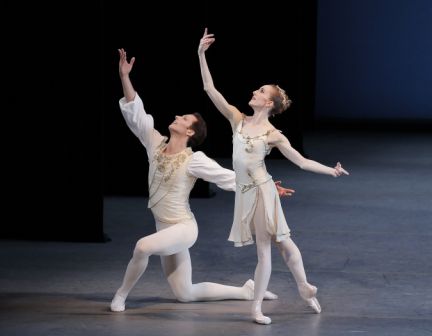
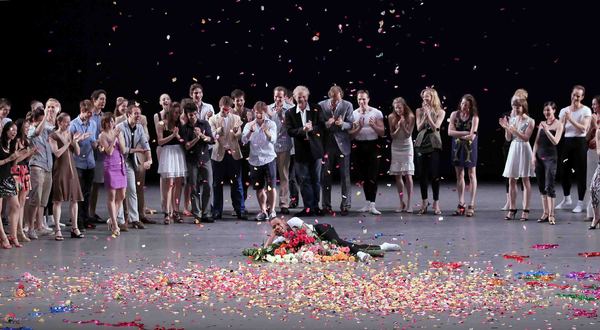
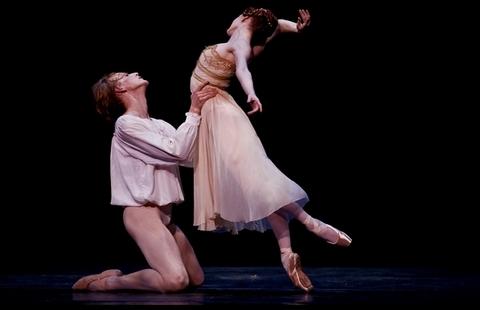
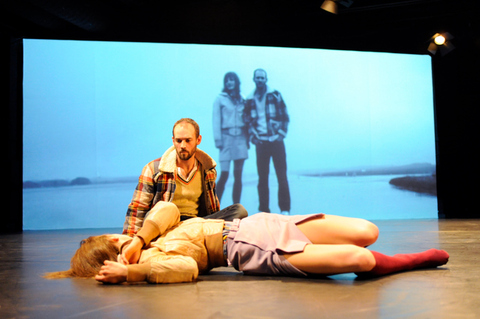
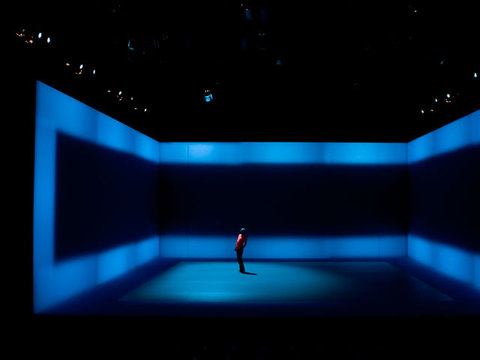
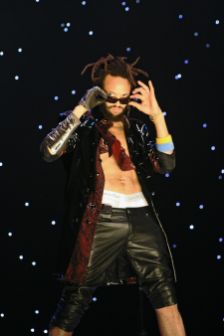

Recent Comments